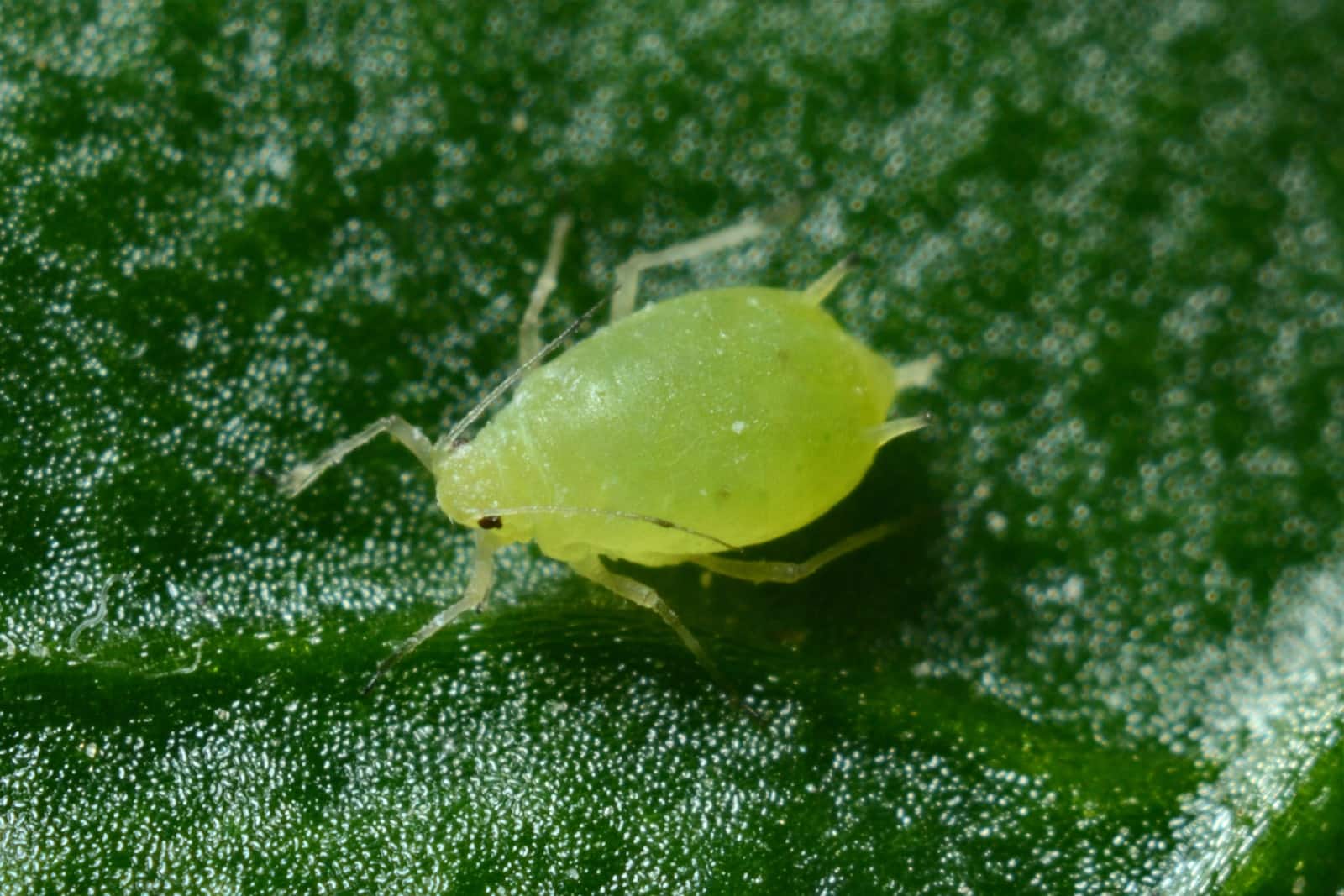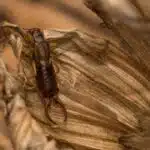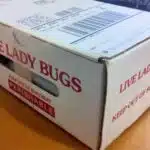Nematodes. You may have heard of them, but do you know what they are and why they are important? These tiny, parasitic organisms have a big impact on our lives, and understanding them can help us keep our gardens healthy and vibrant. In this article, we’ll explore the fascinating world of nematodes and discover how these creatures can benefit us in unexpected ways.
The first thing to know about nematodes is that they’re microscopic worms that live in soil, water and plants. They range from one millimeter to several centimeters in length and come in a variety of shapes. Some nematodes feed on plant roots or other organisms, while others invade host organisms like insects or other animals to get their nutrition. Nematodes also play an important role in the environment by helping to break down dead organic matter into useful soil nutrients.
Nematodes may seem small and insignificant, but they can be incredibly helpful allies when it comes to keeping your garden healthy. In fact, researchers have found ways to use certain types of nematodes as natural pest control agents against harmful insects like aphids and grubs. By understanding the different types of nematode species and their benefits, you can create an effective strategy for managing pests in your garden without resorting to chemical treatments.
1. What Are Nematodes?
Oh, the dreaded nematodes! These miniscule creatures are the bane of gardeners everywhere. Making life difficult for farmers and green-fingered hobbyists alike, these microscopic parasites can cause some serious destruction to crops and gardens. But believe it or not, nematodes can actually be beneficial – if you know how to use them properly.
Nematodes are tiny, thread-like worms that measure anywhere from 0.02mm to 2.5mm in length – making them barely visible to the human eye! While they may seem infinitesimally small, they’re capable of causing huge problems if left unchecked. From gnawing into plant roots and devouring seedlings, to killing off beneficial insects like bees and butterflies; they can cause a lot of damage.
When used correctly however, nematodes can be an effective form of pest control in your garden; using their predatory counterparts to feast on destructive insects like aphids, beetles and caterpillars instead. With just a few simple steps, you too can learn how to make the most out of these tiny creatures – turning them into allies rather than adversaries!
2. What Do Nematodes Look Like?
Nematodes are microscopic creatures that range in size from 0.2mm to 2mm and have a thin cylindrical body. They come in different shapes and can be found in both soil and water. Some species of nematodes are transparent, while others are yellow or red in color. In terms of appearance, they look like tiny worms and can be identified by the presence of four cephalids (head segments) separated by three distinct sections known as annules.
Nematodes also possess a digestive system similar to other worms, including a mouth opening, an outer cuticle layer that aids digestion, and a muscular pharynx that helps them move food through their bodies. Their bodies are covered with bristles which allow them to attach themselves to surfaces such as plant roots or other organisms. Nematodes also contain excretory systems which help them expel waste materials from their bodies, as well as reproductive organs for reproduction purposes.
The way that nematodes reproduce depends on the species. Some reproduce through parthenogenesis (asexual reproduction), while others require mating between two individuals of the same species for successful fertilization of eggs. Nematode eggs can survive extreme conditions such as drought and cold temperatures, allowing them to survive in harsh environments where other organisms may not be able to thrive. With this ability, they can spread quickly across various habitats to find new sources of food and shelter.
3. How Do Nematodes Reproduce?
Nematodes are small, unsegmented worms that play an important role in the environment. Astonishingly, there are over 20 million species of nematode, making them one of the most diverse groups of animals on Earth! Many of these species are parasites, living off other organisms for their survival. So how do they reproduce?
Like many other worms and insects, nematodes reproduce through a process called parthenogenesis. This is when female nematodes create eggs that can hatch without being fertilized by males. These female eggs can also give rise to both male and female offspring – a process known as ‘self-fertilization’. Furthermore, some species can produce multiple generations at one time.
Interestingly, some types of nematodes have evolved special adaptations to survive in extreme conditions. For example, some species can endure temperatures as low as -200°C (-328°F), or even survive in the vacuum of space! All these fascinating facts about nematode reproduction make us wonder: what types of nematodes are there?
4. What Types Of Nematodes Are There?
Nematodes are an incredibly diverse group of organisms, and there are many different types to explore. Understanding the various forms can help us better understand their roles in both our ecosystems and our own lives.
One major type of nematode is parasitic, and these can cause diseases in plants, animals, and even humans. Some of these parasites can be beneficial when used as biocontrols to control pests in agricultural fields or gardens. Others have been studied for their potential use in medical applications such as cancer treatments.
Another common type of nematode is the free-living variety, which can be found in a wide range of habitats from soil to water to even inside rocks. These nematodes play important roles in nutrient cycling and breaking down organic matter, making them essential for healthy ecosystems. With all these different types, it’s clear that nematodes are an extremely important part of our world.
Now that we know about the various types of nematodes, let’s take a look at where they live.
5. Where Do Nematodes Live?
Nematodes are a microscopic mystery to many, hiding in plain sight and yet remaining largely unknown. Like tiny acrobats from a secret world, they inhabit our homes and gardens, performing their astonishing feats of survival without us ever being aware of it. Let’s take a closer look at where these fascinating creatures live.
Nematodes can be found in almost any environment – from the deepest depths of the ocean to the highest mountaintops; under rocks and in soil; even inside other animals! They are incredibly adaptable and can survive extreme temperatures, low oxygen levels, and lack of food. In fact, they have been known to survive up to 10 years without eating! While most nematodes prefer moist environments, some have adapted to dry climates as well.
These resilient organisms have colonized almost every possible terrain on Earth. Whether in lush forests or barren deserts, nematodes can be found everywhere – even between your toes! They also thrive on organic matter like leaves, decaying wood, and compost piles – just about anywhere there is something for them to eat. With such an impressive range of habitats, it’s no wonder why we rarely notice them living among us!
From their remarkable ability to survive in diverse conditions to their clever disguise among everyday objects, nematodes truly are an extraordinary species. It’s clear why we should appreciate these amazing little creatures–even if we don’t know much about them yet. As we uncover more about what nematodes eat next time , it will be exciting to discover new ways that they surprise us with their capabilities!
6. What Do Nematodes Eat?
Tiny and insidious, nematodes are parasites that can wreak havoc in gardens and crops. Like most organisms, they need to eat to survive – but what do these microscopic organisms consume? Let’s take a closer look.
As with many species, the diet of nematodes varies depending on the type. Some feed on bacteria, fungi, or other microorganisms found in soil, while others are predatory and prey on larger insects. These parasites may also target plant roots and leaves when they can’t find any other food sources. As a result, they can cause damage to garden plants if left unchecked.
In essence, nematodes are opportunistic eaters who will consume whatever is available to them – whether it be tiny microbes or larger bugs such as caterpillars. Therefore, it is important to keep an eye on your garden plants and check for any signs of infestation so you can take swift action if necessary! With a bit of attention and some natural solutions such as beneficial nematodes or DIY sprays, you can help keep your plants free from these voracious eaters.
7. How Do Nematodes Damage Plants?
Nematodes are like a hidden plague, lurking in the soil and wreaking havoc on unsuspecting plants. They are microscopic, but their damage can be seen in wilting leaves and stunted growth. So how do these tiny parasites harm our gardens and crops?
Nematodes feed on plant roots, causing them to break down and eventually die. They will also attack the stems and leaves of plants, leading to yellowing or wilting of foliage. In extreme cases, they can cause entire plants to die back completely. Left unchecked, they can spread quickly through a garden or field, leaving behind only decimated remains.
Chemical treatments are one way to stop nematode infestations before they start. However, for those looking for more natural methods of control, there are other practices that can help protect against these parasitic pests. Mulching around plants is important as it reduces their ability to spread. Additionally, rotating crops will reduce the amount of time any particular plant is exposed to them.
8. How Do Nematodes Spread?
Surprisingly, these destructive little parasites can spread in many ways! Irony aside, it’s no wonder that nematodes can be so difficult to keep under control. These microscopic creatures are capable of wreaking havoc on your garden if left unchecked.
The most common way that nematodes spread is through water droplets or water runoff from the soil. Wind and animals are also vectors for their dispersal. Nematodes can even survive in dry soil for up to a month, and when they encounter damp conditions, they become active again and start reproducing rapidly.
Furthermore, nematodes lay eggs inside plant material – such as roots or stems – which can then be carried away by birds or other animals to new areas of the garden or beyond it. In this way, they can infect previously unaffected parts of your garden without you ever realising it! With all these methods of dispersal available to them, it’s no wonder these pesky critters can cause so much damage.
9. How Can You Control Nematodes?
Many people may be wondering why they should bother controlling nematodes in their garden. After all, they’re tiny parasites and can seem harmless. However, it’s important to remember that unchecked populations of these creatures can cause serious damage to plants and crops. Therefore, it’s essential to understand how you can control them.
The most effective way to control nematodes is through biological pest control. This involves introducing beneficial predators or parasites into the environment which will target the pests themselves. For example, certain species of fungi are known to attack the larvae of various types of nematodes. Additionally, predatory mites can help keep the populations under control by eating them when they come into contact with them.
Organic gardening techniques such as crop rotation and companion planting can also help reduce the number of pests in your garden or field as well as providing a more balanced ecosystem for beneficial organisms like nematodes. Finally, using compost tea made from composted organic matter also helps to create a healthy environment for beneficial nematodes while simultaneously reducing the population of harmful pests. All these methods combined can help keep your plants safe from harm caused by nematodes while still allowing their helpful benefits in the garden.
10. What Are The Benefits Of Nematodes?
Who would have thought that such tiny creatures could be so beneficial? Nematodes, often regarded as mere pests, are actually capable of bringing about positive changes in the garden. Surprisingly, these parasites can offer a range of advantages that are worth exploring.
Believe it or not, nematodes can actually help to keep insect populations under control. By preying on certain species of larvae and eggs, they can help to reduce pest numbers without resorting to harsh chemicals. They can also act as natural fertilizers by releasing beneficial bacteria into the soil and providing nutrients to plants.
Most impressively, nematodes are completely harmless to humans and animals alike. This makes them an ideal choice for those looking for an eco-friendly way to manage their gardens without worrying about any adverse effects. Plus, they’re incredibly easy to use – just sprinkle them around your plants and let them do their work!
So why not give these little critters a chance? With their ability to make gardening easier and safer than ever before, it’s no wonder that nematodes have become so popular lately. Now all that’s left is to find out how best to put them into action in our own backyards!
11. How To Use Nematodes In The Garden
“A stitch in time saves nine.” Using nematodes in the garden is an easy and effective way to keep your plants healthy. These tiny parasites, which are also known as roundworms, can help protect your garden from a variety of pests. To get started, you’ll want to purchase beneficial nematodes from a garden center or online dealer.
Once you have the nematodes, you’ll need to prepare them according to the instructions on the package. This typically involves mixing them with water and then spraying them onto your soil or plants. You should apply the solution every seven to ten days for best results. It’s important to note that these beneficial worms will not harm humans, pets, or beneficial insects such as pollinators and ladybugs.
Using nematodes in your garden is an excellent way to control pests without using harsh chemicals or other potentially harmful methods. Plus, they can be used year-round and they require minimal maintenance once they’ve been applied. With a few simple steps, you can effectively use nematodes in your garden and enjoy a beautiful harvest of healthy plants!
12. Are Nematodes Harmful To Humans?
Nematodes are a type of tiny worm-like parasites that can be found in gardens and soil. But are they harmful to humans? In general, nematodes aren’t dangerous to people, but there are some exceptions.
Some species of nematode can cause infections in humans, such as trichinosis or river blindness. These infections are typically caused by consuming contaminated food or water that contain the parasites. Additionally, prolonged contact with soil containing certain species of nematodes may cause skin irritation or rashes in some individuals.
The good news is that many types of nematodes present no danger to people and are actually beneficial for your garden. They feed on other pests like grubs, fungus gnats, fleas, and root-feeding larvae which helps to keep your garden healthy without the need for chemical pesticides. With proper use and precautions, nematodes can be a great tool in helping you maintain a thriving garden environment with minimal risk to your health.
These helpful worms can also help us better understand our environment as scientists study how they interact with other organisms in the soil and how their behavior affects the ecosystem around them. It’s clear that despite any potential risks associated with them, understanding more about nematodes and learning how best to utilize them is key in keeping our gardens safe and healthy.
13. What Are The Best Nematodes For Your Garden?
Nematodes are an important part of any garden. They’re small parasites that can help keep pests away and improve the health of your soil. But, how do you know which nematodes are best for your garden?
For the most part, beneficial nematodes are a safe and natural way to get rid of pests like fleas, grubs, and mites in your garden. Different species of beneficial nematodes will have different benefits depending on the type of pests you’re dealing with in your garden. For example, some species target grubs while others target fleas or mites. It’s important to research which kind would be best for your garden before purchasing them.
When buying beneficial nematodes, make sure they come from a reputable seller who can guarantee their freshness and effectiveness. Once you receive them, it’s important to store them properly so that they remain viable for use in the future. That way, you can get the most out of your investment and keep pest populations under control in your garden for years to come.
14. How To Store Nematodes
Storing nematodes is an important part of maintaining their effectiveness for treating garden pests. When properly stored, nematodes are capable of surviving and remaining viable for months or even years. To ensure that your nematodes stay in top condition, there are a few key steps to follow.
One of the most important considerations when storing nematodes is temperature. Nematodes should be refrigerated at temperatures between 32-41 degrees Fahrenheit in order to remain viable. If the temperature rises above this range, it can cause the nematodes to become inactive and eventually die off. It’s also important to keep them away from direct sunlight, as this can cause them to overheat and die as well.
Finally, it’s crucial to make sure that your nematodes are stored in an airtight container or bag. This will help prevent moisture loss, which can be dangerous for the worms’ health. Additionally, you’ll want to make sure that your container or bag has plenty of oxygen inside so that the worms don’t suffocate. With these tips in mind, you can rest assured that your nematodes will stay healthy and ready for use when needed!
By following these steps and taking proper care when storing your nematode population, you can ensure that they remain effective for treating garden pests when needed. Understanding how to store them correctly is essential if you want them to work their magic in your garden over time!
15. Trouble Shooting Nematode Problems
Trouble-shooting nematode problems can be tricky, like tiptoeing through a minefield. But with the right knowledge and techniques, it’s possible to tackle even the toughest of nematode predicaments. We’ll explore the steps to identify and address those pesky parasites.
The first step is to determine if you have an infestation of nematodes. Look for signs such as wilting or yellowing leaves, stunted growth in plants, or patches of dead grass. If you suspect they’re present in your garden, use a garden soil sample to test for their presence – this will help you determine the level of infestation and select the best approach for treatment.
Once you know that your garden is indeed suffering from a nematode problem, it’s time to take action. Introducing predatory insects into your garden is one option; these beneficial bugs feed on nematodes and can help control their population levels. Also consider using nematicides or nematode-resistant plants – both are effective methods that can bring balance back to your garden environment.
Whatever tactic you choose, make sure you follow instructions carefully and monitor the results closely – with some care and attention, there’s no reason why you can’t get your garden back in tip-top shape!
Frequently Asked Questions
How Long Do Nematodes Live?
Nematodes are a type of microscopic worm that can be beneficial to a garden. They live in soil and feed on certain types of insects and pests, which makes them an effective tool for pest control. But how long do they actually last?
The answer is not easy to determine and depends on several factors. Nematodes have a wide range of lifespans, from several weeks to more than a year. The species, environmental conditions, and the availability of food sources all play a role in their longevity. For example, some nematodes may survive for only a few weeks in cold winter temperatures, while others can live up to three years in warm climates with plenty of food sources.
In addition to the length of time they live, nematodes also need proper care. To keep them healthy and active, they should be stored in a cool, dark place that is free from extreme temperatures or large amounts of moisture. They should also be given enough food sources so they can continue their life cycle without interruption. With proper care, these tiny parasites can provide excellent protection against garden pests for many years.
Are Nematodes Beneficial To Soil Health?
Nematodes are mysterious, microscopic creatures that can have a powerful impact on soil health. These wriggling organisms may be small, but their presence in the soil can have a huge effect on the plants and crops that grow there. So, are nematodes beneficial to soil health? Let’s find out.
Imagining these little critters gliding through the soil with the help of their spiny hairs, it’s easy to see how they could help plants and crops thrive. Nematodes feast on pests such as fungus gnats, harmful bacteria and other parasites that would otherwise damage or even destroy vegetation in a garden or farm. By actively helping to control these pests, nematodes can be incredibly beneficial for soil health.
But nematodes aren’t just beneficial because of their pest-control properties; they also bring nutrients into the soil. The decaying bodies of dead pests provide valuable nitrogen and phosphorus to help fertilize the area and make it more fertile for plants and crops alike. This natural fertilizer helps produce healthier, stronger plants with improved yields.
It’s clear why many farmers and gardeners rely on nematodes to boost their soils’ fertility; without them, their plots might not be as healthy or productive!
Can Nematodes Help Control Insect Pests?
Nematodes are a beneficial form of pest control in the garden. These microscopic worms can be used to help control insect pests and improve soil health. They are naturally occurring, so there is no need for harsh chemical pesticides or herbicides.
Nematodes can be applied directly to the soil, where they feed on the larvae of many common garden pests. They also prey on other organisms, such as fungus gnats and root-feeding grubs. In addition, nematodes may help suppress certain fungal diseases and nematode populations in the soil, leading to improved soil fertility.
Using nematodes as a form of pest control in your garden can be an effective way to protect your plants from harmful insects without relying on toxic chemicals. It can also help improve soil health by providing natural nutrients while controlling pest populations.
Are Nematodes An Organic Way To Control Pests?
Nematodes are an effective and organic way to control pests. In fact, research shows that nematodes are a cost-effective solution for controlling insect pests, being up to 90% successful in reducing pest populations. This makes them an attractive option for anyone looking for a natural approach to dealing with pest control.
The most common type of nematode used for pest control is the Steinernema carpocapsae, which helps to eliminate different species of insects such as fleas, thrips, and caterpillars. These parasites work by entering the insect’s body and releasing bacteria which then kills the insect from the inside out. This method is both safe and efficient as it does not harm beneficial insects like bees or butterflies.
Nematodes can be easily applied in gardens or lawns using a sprayer or water hose attachment. They can also be found online in formulations specifically designed for certain types of insects and environments. When used correctly, nematodes can help reduce insect pest populations without the use of harmful chemicals or pesticides that can potentially cause harm to people and pets alike.
Are Nematodes Harmful To Beneficial Insects?
Nematodes are microscopic creatures, almost invisible to the naked eye, and yet they have a huge impact on the health of your garden. While these tiny parasites may often be seen as little more than pests, they actually offer a safe and organic way to control insects that can do harm to plants. But while they might be beneficial in controlling harmful pests, what effect do nematodes have on beneficial insects?
The answer is surprisingly positive. Nematodes are species-specific hunters, meaning that they will only go after certain types of insects. Most of those target pests are not beneficial for the garden ecosystem, so when it comes to helpful bugs like ladybugs or bees, nematodes leave them alone. In fact, some species of nematode even act as predators to other pests like slugs and caterpillars which can wreak havoc in your garden!
This means that nematodes can be invaluable allies in keeping gardens healthy and thriving. Not only do they offer an organic solution to pest control but, since they don’t touch beneficial bugs, they won’t disrupt the delicate ecological balance of your garden either. So if you’re looking for an effective way to protect your plants without harming their helpful insect neighbors, then look no further than the humble nematode!
Conclusion
Nematodes are small, roundworms that can be beneficial in many ways. They can help to improve soil health, control insect pests, and are an organic way to manage pest problems. However, it is important to note that nematodes can also harm beneficial insects such as bees and butterflies.
To make sure you get the most out of using nematodes in your garden or other areas, it is important to research what types of nematodes would best suit the area where they are being used. For example, a case study conducted by Rutgers University showed that using the right combination of nematodes successfully controlled white grubs in turfgrass without harming bee populations.
Overall, understanding the different types of nematodes and how they interact with their environment can help you decide if they will be beneficial for your garden or other areas. When used correctly and in conjunction with other methods of pest management – such as cultural controls – nematodes can be a powerful tool for managing insect pests organically and protecting beneficial insects at the same time.





























